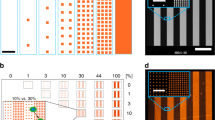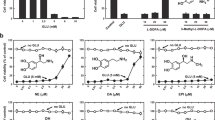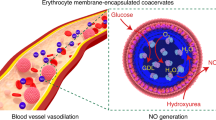Abstract
ABSTRACT: A series of experiments were designed to examine the potential cytotoxicity of nitric oxide (NO), or reactive species derived from NO, in HA1 fibroblasts and H2O2-resistant variants of this cell line, designated OC14 cells. A 1-h exposure at 37°C to a 1.7 mM bolus dose of NO, prepared in N2-gassed medium, significantly reduced clonogenic survival in the HA1 fibroblasts line to 60% of control cells treated with N2-gassed medium alone. The OC14 cells were found to be completely resistant (100% survival) to NO-mediated injury in comparable experiments. A second set of experiments was designed to determine the role of the intracellular antioxidant, glutathione, in protection against NO-mediated injury. Depletion of total glutathione resulted in a significant reduction in HA1 and OC14 clonogenic survival to 8% and 50% when compared with respective control cells. The effect of total glutathione depletion on NO-initiated toxicity in HA1 cells was dose- and cell-density dependent and was observed to occur within 5 min of exposure to NO. Further evidence of cytotoxicity was demonstrated by loss of trypan blue dye exclusion properties in glutathione-depleted HA1 cells after NO exposure. Other experiments demonstrated that nitrate and nitrite exposure produced no cytotoxicity in glutathione-depleted HA1 cells and that coincubation of NO-saturated medium with oxyhemoglobin inhibited NO-induced cytotoxicity in glutathione-depleted HA1 cells. These results demonstrate that 1) nitric oxide, or an NO-derived reactive nitrogen species other than nitrites or nitrates, is responsible for reduction in clonogenic survival and trypan blue dye exclusion capabilities in vitro; 2) biochemical pathways associated with cellular resistance to oxidative stress also confer resistance to NO-mediated injury in this cell model; and 3) total glutathione content determines a significant portion of cell sensitivity to NO-mediated cytotoxicity.
Similar content being viewed by others
Log in or create a free account to read this content
Gain free access to this article, as well as selected content from this journal and more on nature.com
or
Author information
Authors and Affiliations
Rights and permissions
About this article
Cite this article
Walker, M., Kinter, M., Roberts, R. et al. Nitric Oxide-Induced Cytotoxicity: Involvement of Cellular Resistance to Oxidative Stress and the Role of Glutathione in Protection. Pediatr Res 37, 41–49 (1995). https://doi.org/10.1203/00006450-199501000-00010
Received:
Accepted:
Issue date:
DOI: https://doi.org/10.1203/00006450-199501000-00010
This article is cited by
-
Salivary nitrate/nitrite and acetaldehyde in humans: potential combination effects in the upper gastrointestinal tract and possible consequences for the in vivo formation of N-nitroso compounds—a hypothesis
Archives of Toxicology (2022)
-
Protodioscin ameliorates oxidative stress, inflammation and histology outcome in Complete Freund’s adjuvant induced arthritis rats
Apoptosis (2017)
-
Combined L-citrulline and glutathione supplementation increases the concentration of markers indicative of nitric oxide synthesis
Journal of the International Society of Sports Nutrition (2015)
-
The anti-obesity effects of EGCG in relation to oxidative stress and air-pollution in China
Natural Products and Bioprospecting (2013)
-
Protective Effect of Mirtazapine on Indomethacin-Induced Ulcer in Rats and Its Relationship with Oxidant and Antioxidant Parameters
Digestive Diseases and Sciences (2009)



